Showing Spotlights 145 - 152 of 624 in category All (newest first):
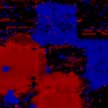 Achieving high-quality crystalline TiO2 films at room-temperature remains one of today's most important technical challenges toward low-cost optoelectronic devices including photovoltaic cells and photocatalytic device architectures. A research team has now demonstrated a simple method for triggering the crystallization of a TiO2 sol-gel precursor at low-energies. With this technique, it is now possible to achieve 90% crystallinity without metallic dopants, at room temperature and in ambient air, using low-power laser-induced photoactivation of an amorphous TiO2 nanoparticle film.
Achieving high-quality crystalline TiO2 films at room-temperature remains one of today's most important technical challenges toward low-cost optoelectronic devices including photovoltaic cells and photocatalytic device architectures. A research team has now demonstrated a simple method for triggering the crystallization of a TiO2 sol-gel precursor at low-energies. With this technique, it is now possible to achieve 90% crystallinity without metallic dopants, at room temperature and in ambient air, using low-power laser-induced photoactivation of an amorphous TiO2 nanoparticle film.
Aug 23rd, 2018
 Though nanotechnology is portrayed as a fairly recent human invention, nature is actually full of nanoscopic architectures. They underpin the essential functions of a variety of life forms, from bacteria to berries, wasps to whales. In fact, tactful use of the principles of nanoscience can be traced to natural structures that are over 500m-years-old. Below are just five sources of inspiration that scientists could use to create the next generation of human technology.
Though nanotechnology is portrayed as a fairly recent human invention, nature is actually full of nanoscopic architectures. They underpin the essential functions of a variety of life forms, from bacteria to berries, wasps to whales. In fact, tactful use of the principles of nanoscience can be traced to natural structures that are over 500m-years-old. Below are just five sources of inspiration that scientists could use to create the next generation of human technology.
Aug 13th, 2018
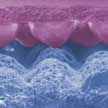 Mimicking the exciting skin structure and function, researchers have designed hierarchical nanoporous and interlocked micro ridge structured polymers with gradient stiffness. The gradient elastic modulus of interlocked and micro ridge structured polymers effectively transfers the external stress and induces the large frictional contact between two polymeric layers, which facilitates their use in self-powered triboelectric sensors. Furthermore, the additional nanoporous structures in the micro ridge structured polymers lead to the effective variation of both volume and gap distance between opposing surfaces without the need of bulky spacers, resulting in ultrathin and flexible triboelectric sensors for applications in wearable electronics.
Mimicking the exciting skin structure and function, researchers have designed hierarchical nanoporous and interlocked micro ridge structured polymers with gradient stiffness. The gradient elastic modulus of interlocked and micro ridge structured polymers effectively transfers the external stress and induces the large frictional contact between two polymeric layers, which facilitates their use in self-powered triboelectric sensors. Furthermore, the additional nanoporous structures in the micro ridge structured polymers lead to the effective variation of both volume and gap distance between opposing surfaces without the need of bulky spacers, resulting in ultrathin and flexible triboelectric sensors for applications in wearable electronics.
May 22nd, 2018
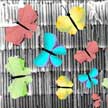 Most approaches to making artificial structural colors rely on low-throughput fabrication techniques, use expensive noble metal materials, and are limited to microscopic footprints. To address these limitations, an international team of researchers has demonstrated high-throughput fabrication of all-dielectric mesoporous materials with macroscopic footprints and colorimetric signatures spanning the whole gamut of visible colors. Inspired by the butterfly wing coloration, the researchers completely avoided the use of noble metals, and instead realized structural colors in cheap and abundant dielectric materials, which are completely transparent in the bulk form.
Most approaches to making artificial structural colors rely on low-throughput fabrication techniques, use expensive noble metal materials, and are limited to microscopic footprints. To address these limitations, an international team of researchers has demonstrated high-throughput fabrication of all-dielectric mesoporous materials with macroscopic footprints and colorimetric signatures spanning the whole gamut of visible colors. Inspired by the butterfly wing coloration, the researchers completely avoided the use of noble metals, and instead realized structural colors in cheap and abundant dielectric materials, which are completely transparent in the bulk form.
May 11th, 2018
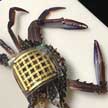 Frequently, research by marine biologists depends on weighty and invasive sensory and telemetry equipment to understand and assess various aspects of the marine ecosystem. Researchers generally employ invasive attachment techniques to attach these devices to animals, sometimes restricting their natural movements. These tagging systems can be quite abrasive and not so forgiving on the animals. An alternative is a newly developed developed smart skin that integrates the main desired sensor arrays for continuously logging salinity/conductivity, temperature and depth in deep oceans.
Frequently, research by marine biologists depends on weighty and invasive sensory and telemetry equipment to understand and assess various aspects of the marine ecosystem. Researchers generally employ invasive attachment techniques to attach these devices to animals, sometimes restricting their natural movements. These tagging systems can be quite abrasive and not so forgiving on the animals. An alternative is a newly developed developed smart skin that integrates the main desired sensor arrays for continuously logging salinity/conductivity, temperature and depth in deep oceans.
May 7th, 2018
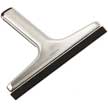 By precisely stacking various 2D materials in a predetermined sequence on top of each other, researchers create van der Waals heterostructures that, due to their unique interlayer coupling, have special optoelectronic properties. Unfortunately, the study of 2D monolayers is plagued by trapped contaminants in between the 2D sheets as well as between the 2D sheets and the underlying substrate. These contaminants make it difficult to obtain precise and reproducible experimental observations. A simple technique for removing these contaminants in a process similar to a squeegee.
By precisely stacking various 2D materials in a predetermined sequence on top of each other, researchers create van der Waals heterostructures that, due to their unique interlayer coupling, have special optoelectronic properties. Unfortunately, the study of 2D monolayers is plagued by trapped contaminants in between the 2D sheets as well as between the 2D sheets and the underlying substrate. These contaminants make it difficult to obtain precise and reproducible experimental observations. A simple technique for removing these contaminants in a process similar to a squeegee.
May 1st, 2018
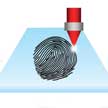 Creating smart superhydrophobic (i.e. extremely water-repellent) surfaces is of increasing importance in cutting-edge applications such as self-cleaning, anti freezing, anticorrosion, anti biofouling, water/oil separation, and microfluidics. Researchers now managed to demonstrate a skin-like superhydrophobic surface, which can be switched into different wetting properties by simple body motion. This active surface enables on-demand manipulation of water droplets without energy supply or external appliance.
Creating smart superhydrophobic (i.e. extremely water-repellent) surfaces is of increasing importance in cutting-edge applications such as self-cleaning, anti freezing, anticorrosion, anti biofouling, water/oil separation, and microfluidics. Researchers now managed to demonstrate a skin-like superhydrophobic surface, which can be switched into different wetting properties by simple body motion. This active surface enables on-demand manipulation of water droplets without energy supply or external appliance.
Apr 24th, 2018
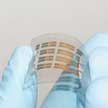 Next-generation electronic devices will be highly portable, wearable - even transplantable - lightweight, and most likely self-powered. Among the various functional block required for these systems (such as displays, sensors, actuators, etc), some of the most important components are novel flexible data storage systems that possess nonvolatile ability, high-density storage, high-switching speed, and reliable endurance properties. Especially organic memories have been considered as the most promising candidates to be used in various portable and wearable systems in future due to their remarkable advantages of nonvolatile memory features, low cost, easy fabrication, and flexibility.
Next-generation electronic devices will be highly portable, wearable - even transplantable - lightweight, and most likely self-powered. Among the various functional block required for these systems (such as displays, sensors, actuators, etc), some of the most important components are novel flexible data storage systems that possess nonvolatile ability, high-density storage, high-switching speed, and reliable endurance properties. Especially organic memories have been considered as the most promising candidates to be used in various portable and wearable systems in future due to their remarkable advantages of nonvolatile memory features, low cost, easy fabrication, and flexibility.
Apr 9th, 2018
 Achieving high-quality crystalline TiO2 films at room-temperature remains one of today's most important technical challenges toward low-cost optoelectronic devices including photovoltaic cells and photocatalytic device architectures. A research team has now demonstrated a simple method for triggering the crystallization of a TiO2 sol-gel precursor at low-energies. With this technique, it is now possible to achieve 90% crystallinity without metallic dopants, at room temperature and in ambient air, using low-power laser-induced photoactivation of an amorphous TiO2 nanoparticle film.
Achieving high-quality crystalline TiO2 films at room-temperature remains one of today's most important technical challenges toward low-cost optoelectronic devices including photovoltaic cells and photocatalytic device architectures. A research team has now demonstrated a simple method for triggering the crystallization of a TiO2 sol-gel precursor at low-energies. With this technique, it is now possible to achieve 90% crystallinity without metallic dopants, at room temperature and in ambient air, using low-power laser-induced photoactivation of an amorphous TiO2 nanoparticle film.
 Subscribe to our Nanotechnology Spotlight feed
Subscribe to our Nanotechnology Spotlight feed





